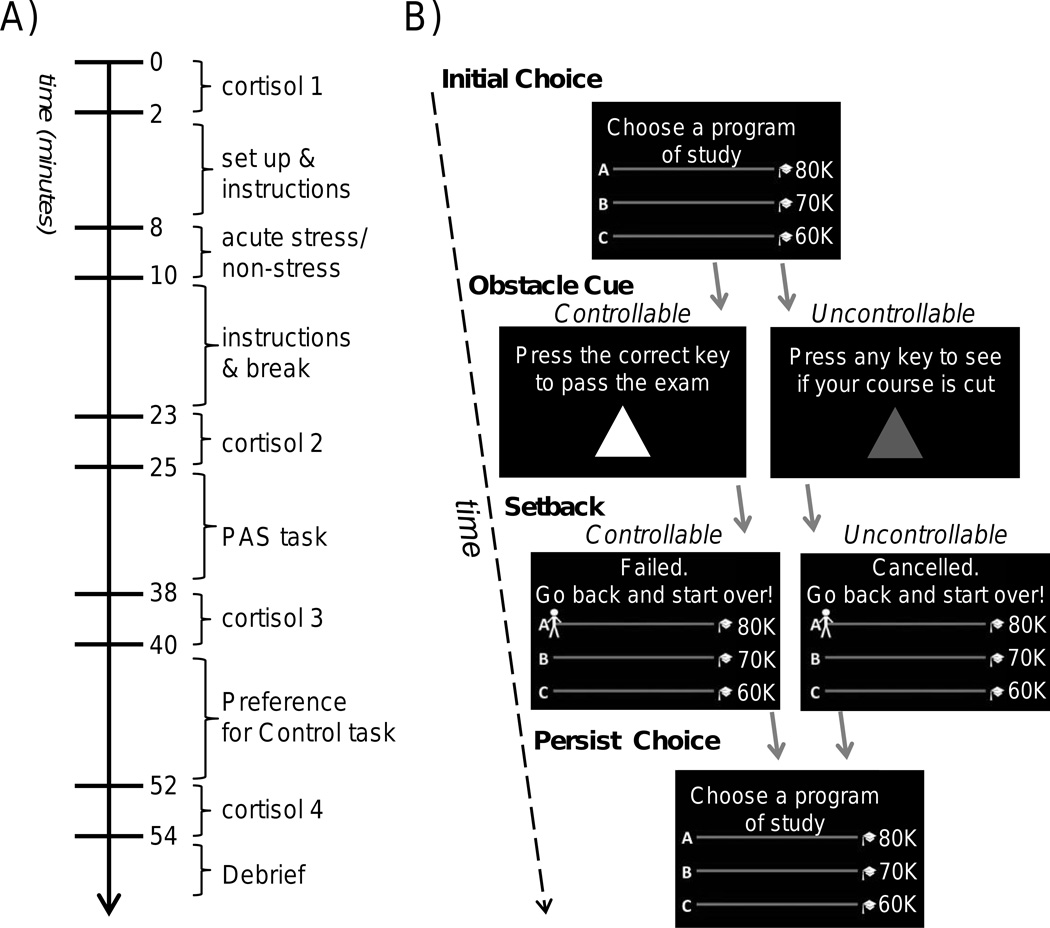Figure 1.
Experimental timeline and Persistence After Setbacks (PAS) task. A) Experiment timeline: Saliva samples were taken to measure cortisol at four time points during the study, labeled cort 1–4. B) Key components of a PAS task trial were the initial choice, obstacle cue, setback, and then the choice to persist with the initial choice or not. Initial Choice: Participants chose a path to pursue then advanced by encountering progress cues (“class meetings” not shown here). Obstacle Cue: Participants encountered controllable or uncontrollable obstacles on the chosen path. Setback: Participants avoided (not shown) or received setbacks, which sent them back to the beginning of the path. Persist Choice: Participants chose to persist or not persist with the originally chosen path. A blank screen with a fixation dot at the center appeared between each event for 4s or 6s, allowing for measurement of skin conductance responses to setbacks. A round ended if the participant reached the end of a path (three steps) or if the participant “ran out of time” (i.e., after a predetermined number of setbacks, which was unknown to participants).

